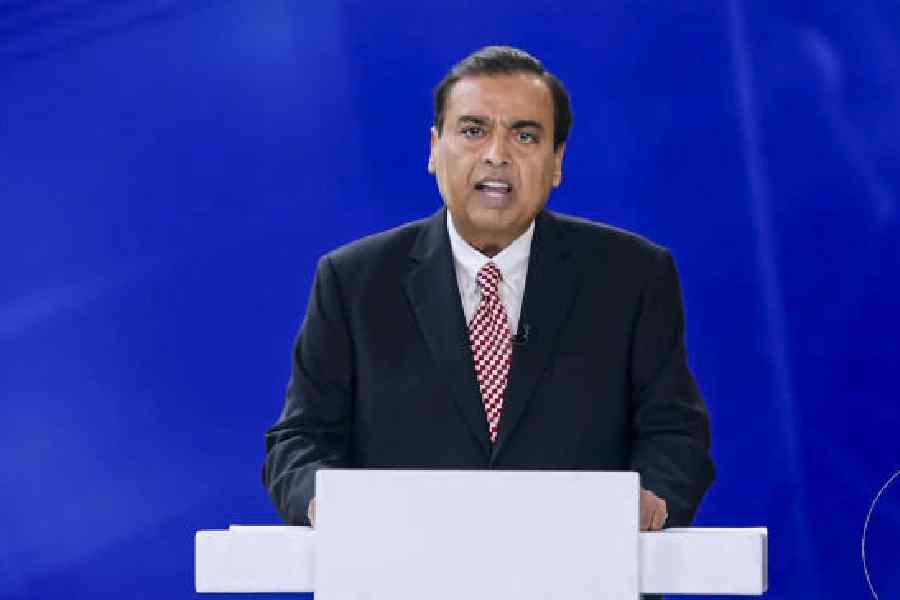Defence Minister Rajnath Singh is scheduled to preside over the commissioning of two multi-mission stealth frigates, Udaygiri and Himgiri, at the Eastern Naval Command here by the Indian Navy on Tuesday.
Udaygiri and Himagiri come from the Indian Navy’s latest state-of-the-art Project 17 A, and their commissioning is the first occasion when two frontline surface combatants built at two different shipyards will be commissioned simultaneously.
This development underscores the growing maritime importance of India’s eastern seaboard.
“Two state-of-the-art combatant platforms join the Indian Navy fleet, fortifying India’s strength at sea. RM Rajnath Singh (Defence Minister) will preside over this momentous commission ceremony,” said the Indian Navy in a post on X late on Monday.
The role of Navy is not limited to the protection of the sea, but it is also a major pillar of the economic security as Indian energy requirements such as oil, natural gas depend on the security of the region to a great extent, defence minister Rajnath Singh said on Tuesday.
"The geo-strategic situation here is such that it also has the ability to directly influence our economic development. Our energy requirements, oil, natural gas, all depend on the security of this region to a great extent. Therefore, the role of the Navy is not only limited to the protection of the sea, but it is also a major pillar of our national economic security," Singh said.
Udaygiri and Himgiri are follow-on ships of the Project 17 (Shivalik) class frigates, and both the vessels incorporate significant improvements in design, stealth, weapon and sensors systems, capable of executing a full spectrum of maritime missions in ‘blue water’ conditions.
Udaygiri is the second ship from Project 17A stealth frigates and was built by Mazagon Dock Shipbuilders Limited (MDL) in Mumbai.
While Himgiri is the first of P17A ships to be constructed by Garden Reach Shipbuilders & Engineers (GRSE), Kolkata. Both the frigates represent a generational leap over earlier designs.
Udaygiri also holds the distinction of being the fastest ship of her class to be delivered post-launch, a result of the modular construction methodology adopted by Indian shipyards.
Displacing about 6,700 tons, the P17A class frigates are roughly five per cent larger than their predecessor Shivalik-class frigates, incorporating a sleeker form with a reduced radar cross section.
The frigates also feature a suite of advanced weapons and sensors developed by Indian manufacturers.
The weapons suite of these frigates, include supersonic surface-to-surface missiles, medium range surface-to-air missiles, 76 mm MR Gun and a combination of 30 mm and 12.7 mm close-in weapon systems.
In another major milestone for the Indian Navy, Udaygiri also happens to be the 100th ship designed by the Navy's Warship Design Bureau (WDB), marking a milestone in five decades of indigenous warship design.
Both ships are the result of an industrial ecosystem spanning over 200 MSMEs, supporting approximately 4,000 direct jobs and more than 10,000 indirect jobs.
This event underscores India's accelerating naval modernisation and its ability to deliver sophisticated warships from multiple shipyards.
With 75 percent indigenous content, the frigates align with the Indian Government’s vision of Aatmanirbhar Bharat (self-reliance) in defence manufacturing.
The commissioning of Udaygiri and Himgiri will augment the Navy’s combat readiness and reaffirm India’s resolve to achieve self-reliance in warship design and construction.
Upon commissioning, the two frigates will join the Eastern Fleet, strengthening India’s ability to safeguard its maritime interests across the Indian Ocean Region, said a Ministry of Defence press release on Monday.
Except for the headline, this story has not been edited by The Telegraph Online staff and has been published from a syndicated feed.










